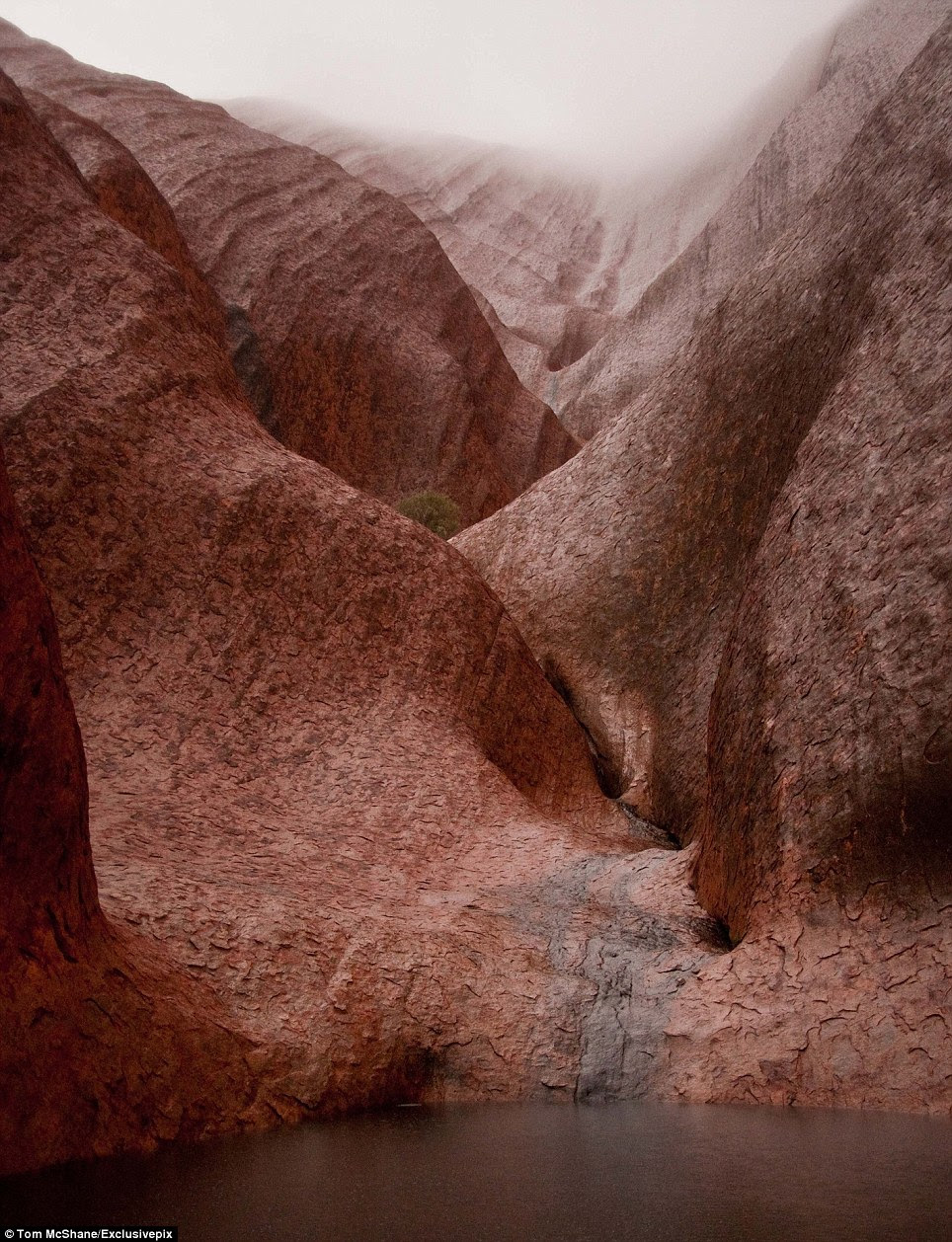Uluru as you've never seen it: Stunning pictures of waterfalls gushing down the sacred rock after a rare downpour
- The World Heritage listed site, in the southern part of Australia's Northern Territory, was covered with streams of water after some heavy rainfall
- It's believed that an estimated one per cent of visitors to Uluru in Alice Springs get the chance to witness waterfalls flowing from the rock
Stunning images have emerged of a rare sight at Uluru, one of Australia's most iconic natural wonders in the southern part of the Northern Territory, when it was covered with innumerable streams of water.
The large sandstone formation, also known as Ayers Rock which is located in the heart of Uluru-Kata Tjuta National Park, is one of the most recognisable ancient landmarks of the country and stands 348 meters-high, spans 3.6km and is 1.9km wide.
The World Heritage listed site experiences heavy rains between November and March. A spokeswoman for Parks Australia, who manage the Aboriginal heritage, said they received about 300mm of rainfall a year. She said the last rainfall was on May 26.
It is estimated that about 1 per cent of visitors to Uluru get the chance to see waterfalls cascading off the rock.

Innumerable streams of water covered Uluru in Alice Springs, the southern part of Australia's Northern Territory, after some heavy rainfall

A spokeswoman for Parks Australia, who manage the site, said it's estimated that only one per cent of visitors to Uluru in Alice Springs get the chance to witness waterfalls flowing from the rock

Uluru is one of Australia's most recognisable natural landmarks. It stands about 348m high, spans 3.6km and is 1.9km wide

The World Heritage listed landscape is one of Australia's most iconic symbols of the outback. It is located in the heart of Uluru-Kata Tjuta National Park in Australia's Red Centre


The large sandstone rock formation was named Ayers Rock in 1873 in honour of the then Chief Secretary of South Australia, Sir Henry Ayers

In 1993, a dual naming policy was adopted that allowed official names that consist of both the traditional Aboriginal name and the English name. It was then renamed Ayers Rock/Uluru and became the first official dual-named feature in the Northern Territory

The order of the dual names was officially reversed to Uluru/Ayers Rock in November 2002 after a request from the Regional Tourism Association in Alice Springs

The Uluru Base Walk is a 10km walk on a flat marked dirt path and can be completed in around 3.5 hours

Anangu own all of Uluru and Kata Tjuta. The site is leased to Parks Australia and is jointly managed as a national park. This arrangement first came into place in October 1985

Uluru-Kata Tjuta National Park is one of the few properties in the world to be dual-listed by the United Nations Educational Scientific and Cultural Organisation (UNESCO) for its outstanding natural and cultural values


The Australian government returned ownership of Uluru to the local Pitjantjatjara Aborigine on October 1985

The traditional owners of Uluru-Kata Tjuta are the Anangu Aboriginal people

Rock art can be found in the caves. The Department of Environment website says this is further evidence of the enduring cultural traditions of Anangu

No comments:
Post a Comment